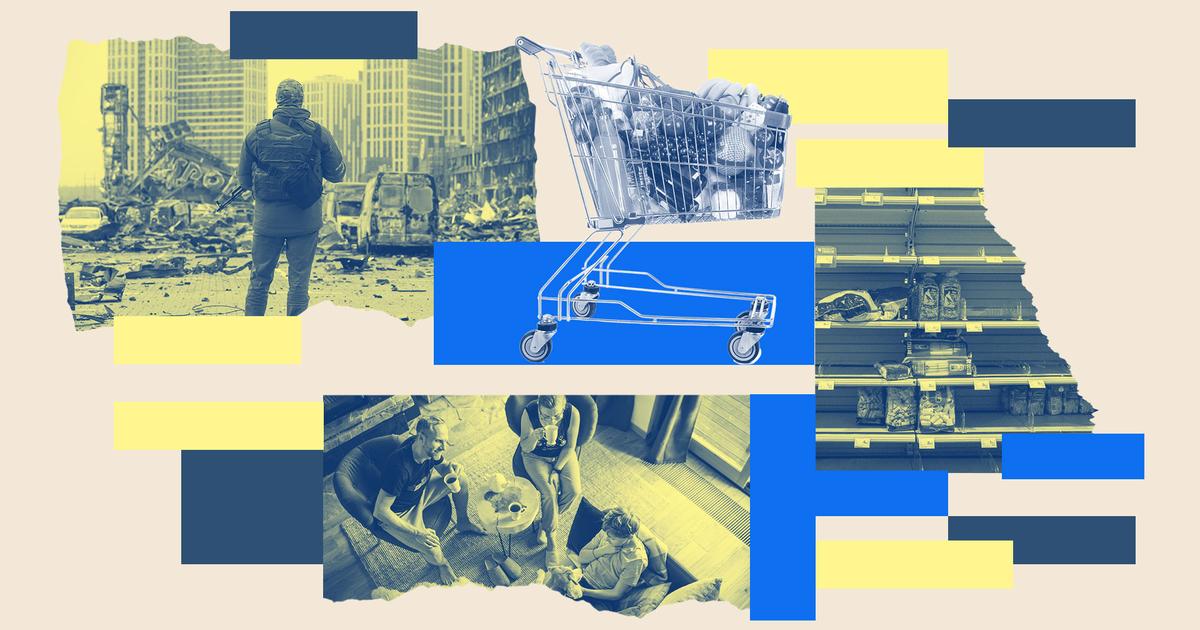From refueling to the ticket for the weekly shopping cart, from the bill for a dinner at the restaurant to the heating bill for the winter... A year later, the consequences of the war in Ukraine continue to weigh on the daily life of the French.
Everyone can feel it, by taking out their credit card to pay for their purchases, or even by grabbing their change to pay for their baguette: the conflict has considerably worsened the inflation already perceptible in 2021, leading to an upheaval in flows of exchange, and a massive rise in prices.
Enough to encourage households to adapt to live and consume despite the consequences of
the Russian "special operation
".
Go back eighteen months.
In 2021, inflation was already beginning to chip away at the budget of French households.
Established at 1.2% in July, the rate measured by INSEE jumped rapidly, rising to 2.2% in September, 2.8% in November, and 2.9% in January, a few weeks before the outbreak of the conflict, February 24.
After the arrival of Russian troops on Ukrainian soil, it exploded rapidly: 4.5% in March, 5.2% in May, 6.1% in July... fight on the side of the authorities, who draw the checkbook to calm the fire, failing to extinguish it.
Read alsoInflation: why prices will not fall
Because if the inflationary phenomenon observed for a year is not entirely caused by the conflict triggered by Vladimir Putin, it has come to add fuel to the fire.
“
The war took place in a context where there were already global tensions over supplies
,” recalls the head of the Insee Conjuncture department, Julien Pouget.
Strong post-Covid demand had already fueled the recovery in activity, and pushed up labels.
But it was the conflict that really played the role of detonator, by driving up energy prices, disrupting flows in certain sectors, such as food, and creating strong tensions on the markets.
Two seemingly unrelated events - the health crisis, on the one hand, and the conflict, on the other - have therefore led to the worst inflationary crisis in recent decades, straining supply chains.
“
Imported rather at the start and concentrated on energy, inflation then spread
,” adds Julien Pouget.
Let us judge: between January 2022 and January 2023, many everyday products and services saw their prices explode, gradually strangling economic players, reveal data from national statisticians.
And, without the aid measures from the public authorities, “
the decline in purchasing power between the end of 2021 and the end of 2023 could have reached almost 5% in the least favorable scenario
“, Calculates the OFCE in a note released at the end of February.
Impressive household resilience
At the beginning of the conflict, some feared that shortages would multiply: consumers then gave in to " panic buying
" behavior
, compulsive purchases for fear of shortages, like what had been seen during the crisis. Covid-19 for toilet paper or flour.
According to Iri, "
the ruptures reached peaks over certain periods and certain products
": the rate of complete ruptures thus came close to 8%, last year, against 7.5% in 2021 and 7.2% pre-Covid. .
But these dynamics remained "
very detailed
", and limited, nuance an expert, who recalls that the situation has calmed down over the months.
Anxious to protect their purchasing power, individuals have turned their backs, first by reducing their consumption, then by saving more when they could, and finally by adapting their spending to the new situation.
“
Last year was marked by sobriety
,” summarizes Lydia Rabine, consumer expert at Kantar.
Our fellow citizens have sacrificed certain positions, for example by going out less to reduce the leisure budget, which is easier to compress than food.
"
It's quite clear for the most vulnerable populations
“, adds our interlocutor.
The example of restaurants is telling: the well-to-do and upper-middle classes exceeded their 2019 level of attendance last year, while the lower-middle class and modest people are still far from it.
Read alsoInflation reshuffles the cards in food distribution
For their daily shopping, households have activated three arbitration levers, comments the consumer specialist Olivier Dauvers.
First, the change of sign, by “
taking refuge towards those which have the best image price
”, like Leclerc or Lidl.
Then, an “
arbitration on quantities
”, by buying less, and less often, in particular more expensive products such as meat or fish.
Finally, the “
descent in range
”, by focusing more on distributor brands or first prices, according to your budget.
A statement also made by…
This article is for subscribers only.
You have 50% left to discover.
Flash Sale -70%
Offer available until February 28.
Without engagement.
I ENJOY IT
Already subscribed?
Login














